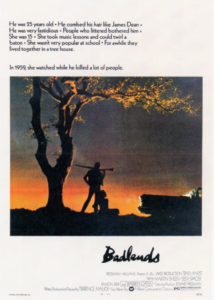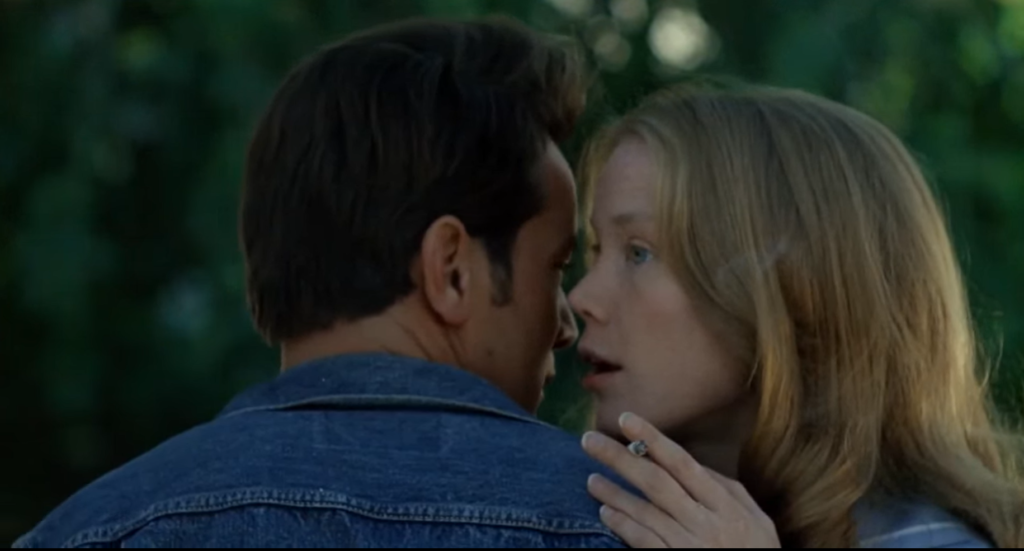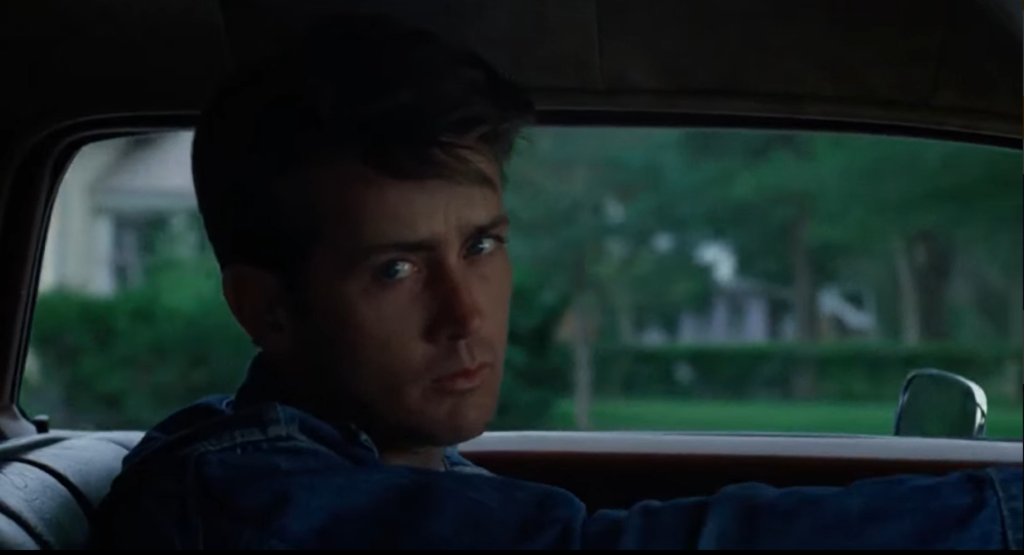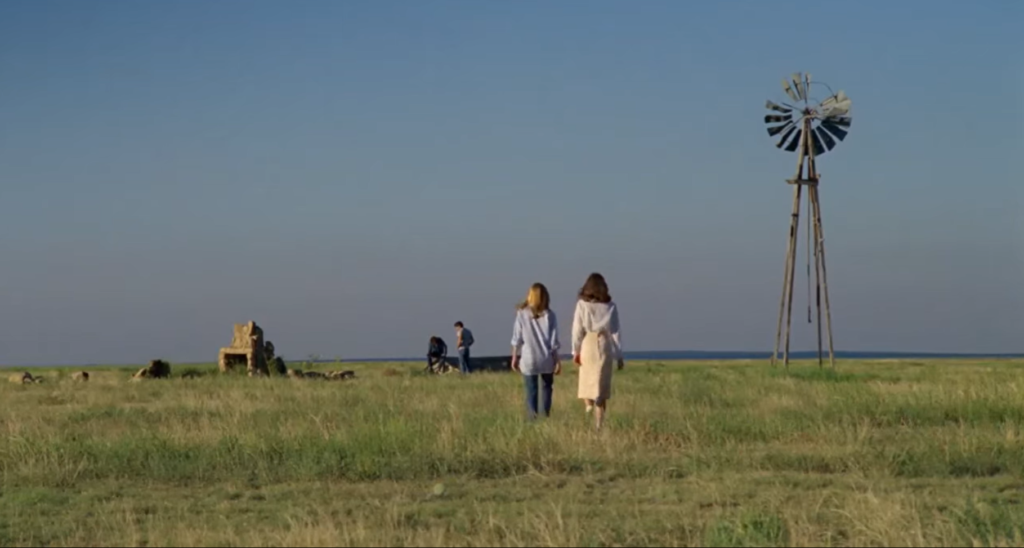Badlands (1973)
“He needed me now more than ever — but something had come between us.”
|
Synopsis: |
|
Genres, Themes, Actors, and Directors:
Response to Peary’s Review: Peary argues that this film “is a grim study of two… products of an American society that, during the apathetic, lethargic Eisenhower era, is so emotionally, morally, and culturally bankrupt that it not only spawns and nurtures killers but makes them folk heroes as well.” (However, given that every era seems to spawn such warped individuals, I’m not sure this analysis is quite accurate.) He writes that the murders are “properly deglamorized” by Malick, and are “a function of their yearning to escape the vacuum that is their world.” Indeed, Kit’s “obsession with leaving behind a record of his life at every stop” (a nice narrative touch) “is his misguided attempt to remind people he was special in an era of conformity.” Peary concludes his review by noting the film is “more than worthwhile” and “has a cult among critics who consider it an important, original film”. In his Cult Movies book, he further praises Malick’s “wonderful attention not only to the plants and trees of the landscape but to nature’s sounds, like the swirling breezes and even the chirping crickets”, and reiterates again that “the visuals are extraordinary: the enormous sky and the large full moon and red clouds that fill it; indoor settings lit by the sun filtering through the windows; great gobs of dust sweeping across the barren land at twilight.” In Cult Movies, Peary also provides an extended comparative analysis of Badlands with Pretty Poison (1968) — a connection I wouldn’t necessarily have made (I’m more apt to think of Bonnie and Clyde), but does make sense given they’re both films “in which a director intends his characters to embody a sociological ‘sickness’ that is spreading through America’s heartland.” As Peary writes, both girls are first seen doing something innocent and all-American (baton twirling, marching while carrying a flag), and are attracted to an older stranger to whom they lose their virginity. Both “have strict single parents who order [the] male suitors to stay away from their daughters or face harsh consequences”, and “the murder sequences” of these parents “begin much the same way.” However, after this, the films clearly diverge, with Kit and Holly not “wavering in the least from what we already know about them and expect of them.” He argues they “lack the unpredictability, the intelligence, the spark, and the emotion that make” the characters in Pretty Poison “so interesting to watch.” Indeed, as Peary writes, we find out by the end of Badlands that these two murderous individuals are simply “dull, empty people.” Redeeming Qualities and Moments: Must See? Categories
(Listed in 1001 Movies You Must See Before You Die) Links: |




One thought on “Badlands (1973)”
A once-must, mainly for the lead performances, the photography and Malick’s direction.
Not a favorite flick but its plus-factors and its overall-hypnotic tone make it view-worthy. Malick’s first film remains his most traditional though he does seem to want to thwart that from time to time. All told, making a film about “dull, empty people” this compelling is no small accomplishment.